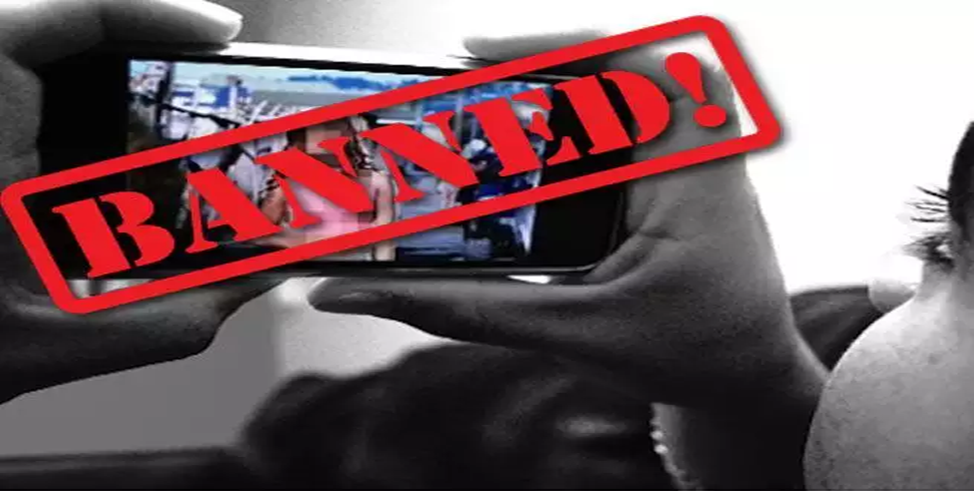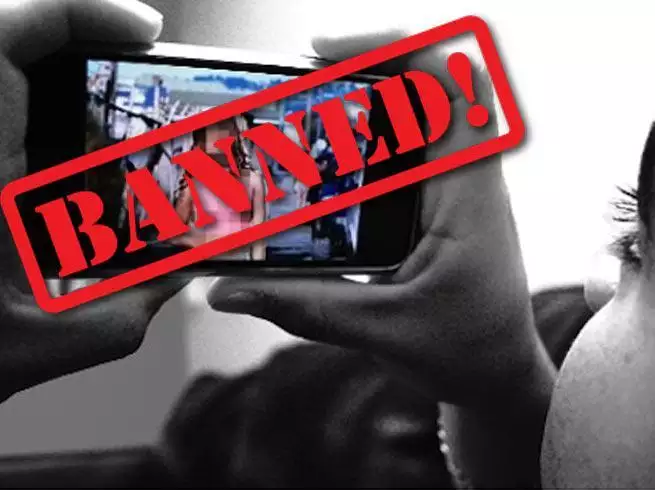Context : In a recent decision, the Madras High Court sparked controversy by quashing judicial proceedings in the case of S. Harish vs Inspector of Police, ruling that downloading child pornography does not constitute an offense under Section 67B of the Information Technology (IT) Act, 2000. This ruling has raised significant questions about the interpretation and enforcement of laws related to online exploitation, particularly regarding the protection of children from sexual offenses.

Understanding Child Pornography
Definition
Child pornography refers to the creation, distribution, or possession of sexually explicit material involving minors. In both India and globally, it is considered a heinous crime with severe implications, perpetuating the sexual exploitation and abuse of children.
Online Child Pornography
Online child pornography is the digital manifestation of this exploitation. It encompasses the production, distribution, or possession of sexually explicit material involving minors through digital platforms.
Legal Framework (Indian Scenario)
In India, the Protection of Children from Sexual Offences (Amendment) Act, 2019 defines child pornography as any visual depiction of sexually explicit conduct involving a child. This includes photographs, videos, digital or computer-generated images indistinguishable from an actual child.
Current Situation
The spike in cases of child pornography reflects the grim reality of online child sexual abuse in India. According to the National Crime Record Bureau (NCRB) 2021 report, cases have increased from 738 in 2020 to 969 in 2021.
Impacts of Child Pornography
Psychological Impact
Exposure to pornography can have a profound psychological impact on children, leading to depression, anger, anxiety, and mental distress. It can disrupt their daily functioning, affect their biological clock, work, and social relationships.
Impact on Sexuality
Regular exposure to child pornography can foster a sense of sexual gratification and obsession, potentially leading to a willingness to engage in similar behaviors in real life.
Sexual Addiction
Experts equate pornography consumption to addiction, as it can produce similar effects on the brain as substance abuse. This addiction can have serious implications for individuals' mental and emotional well-being.
Behavioral Impact
Adolescent pornography use is associated with stronger beliefs in gender stereotypes, particularly among males. Those who frequently consume pornography may be more likely to view women as sex objects and exhibit attitudes supportive of sexual violence and violence against women.
Interpretation of Legal Provisions
The High Court's decision hinged on its interpretation of Section 67B(b) of the IT Act, which outlines various actions punishable under the law, including creating, collecting, seeking, browsing, downloading, advertising, promoting, exchanging, or distributing material depicting children in an obscene or sexually explicit manner. While the accused in the case had downloaded child pornography onto his electronic device, the court deemed it necessary for an offense to involve the publication, transmission, or creation of such material in order to be prosecutable under the statute.
Moreover, the High Court's reliance on a precedent set by the Kerala High Court regarding the interpretation of Section 292 of the Indian Penal Code (IPC) raised additional concerns. While the Kerala High Court had ruled that watching pornography in private spaces did not constitute an offense under Section 292 of the IPC, the context of child pornography differs significantly, as it involves the exploitation and abuse of minors.
Analysis of Judicial Decision
The Madras High Court's decision to quash the judicial proceedings under Section 482 of the Criminal Procedure Code (CrPC) has drawn criticism for its potential implications on child protection laws. Despite acknowledging the presence of downloaded child pornography on the accused's device, the court concluded that the offense was not prosecutable under Section 67B(b) of the IT Act. However, this interpretation overlooks the explicit language of the statute, which encompasses the act of downloading such material as a punishable offense.
Furthermore, the court's failure to consider the broader implications of its decision, particularly in light of the ongoing efforts to combat online exploitation of children, raises concerns about the effectiveness of existing legal frameworks. By prioritizing procedural technicalities over the substantive intent of the law, the court's decision sets a troubling precedent that could undermine efforts to hold perpetrators of child sexual abuse accountable.
Recommendations for Legal Reform
To address the inconsistencies highlighted by the Madras High Court's decision, it is imperative to consider legislative reforms aimed at strengthening the legal framework for combating online exploitation of children. One crucial step involves amending the Protection of Children from Sexual Offenses (POCSO) Act to explicitly criminalize the mere possession of child sexual abuse material (CSAM), aligning it with the provisions of the IT Act.
Additionally, replacing the term "child pornography" with "CSAM" in Indian laws reflects a more accurate understanding of the nature of such material and underscores the non-consensual and exploitative nature of its production and distribution. By harmonizing the provisions of the POCSO Act and the IT Act, lawmakers can ensure a more cohesive and effective approach to combating online child exploitation.
Conclusion
The Madras High Court's decision in S. Harish vs Inspector of Police has ignited a debate about the interpretation and enforcement of laws related to online exploitation of children. While the court's ruling raised concerns about the adequacy of existing legal frameworks, it also underscored the need for legislative reforms to address inconsistencies and strengthen protections for vulnerable minors.
Moving forward, it is essential for policymakers to prioritize the harmonization of laws governing online exploitation and to enact measures that reflect the evolving nature of digital threats to children. By adopting a comprehensive approach that combines legal reforms with enhanced enforcement mechanisms, India can better protect its youth from the scourge of online sexual abuse and exploitation.
|
Probable Questions for UPSC Mains Exam
1. Discuss the Madras High Court's decision in S. Harish vs Inspector of Police, evaluating its impact on enforcing laws against online exploitation of children in India. Highlight discrepancies between the court's interpretation of Section 67B(b) of the IT Act and child protection laws, and propose reforms to address these inconsistencies. (10 marks, 150 Words)
2. Analyze the psychological and societal effects of child pornography consumption on minors, as detailed in the article. Assess the implications of the Madras High Court's ruling on prosecuting individuals for downloading child pornography under Section 67B(b) of the IT Act, and suggest policy measures to strengthen protections for vulnerable children in the digital realm. (15 marks, 150 words)
|
Source – The Hindu







